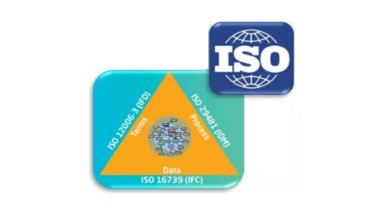Zigurat Global Institute of Technology
Blog / BIM & Construction Management
Transformation of Professional opportunities in BIM
Categories

Professional opportunities in BIM have changed along with the profiles that employers seek. With the introduction of new technologies, the workforce has begun to demand new skill sets when looking for employees. Among them, in the field of BIM professional. The adoption of automation and artificial intelligence has created a greater need for technological, as well as social and emotional skills. Year after year the workplace has been transforming and employees are interacting more with technology. The digitization of the workplace translates into higher productivity, GDP growth, and improved corporate performance, but this also leads to a transformation of the skills required.
A well-trained workforce is a requirement
In order to adopt digital strategies and new technologies a well-trained workforce is essential to ensure greater productivity. If the demand for these skills is not met with a prepared workforce this would lead to rising skill-wage changes and exacerbate social tensions. Avoiding this and facing the challenges that accompany automation will depend on how well-trained the workforce is and how adaptable companies can be.
Social and emotional skills
According to a recent report by Mckinsey & Company, the demand for technological skills will continue to rise but so to will the need for social and emotional skills. Those with the most professional opportunities will have leadership and management skills and high cognitive skills, such as creativity, critical thinking, decision making, and complex information processing. These are skills that need constant updating, practice and experience through courses, training and further education.
Team based and cross functional work will increase with an emphasis on agility
Efficiency is a high-priority in the organizational shift taking place, and cross-functional collaboration will be key. Companies are shifting from traditional hierarchies to agile organizations in which the organization is based on a network of teams and characterized by their rapid learning and fast decision cycles. Professionals must be able to work in effectively in teams and employ the most innovative technology for this purpose.
Professionals of the architecture, engineering and construction sector
The AECO sector is demanding new professional profiles worldwide. The introduction of new technologies, business trends, and digitization in BIM has opened doors to new competitors and markets. This, of course, causes change in managerial positions especially in sections for information systems (CIO's) but also in others such as BIM management. Standardization of BIM models coupled with globalization have impulsed the need for companies with a global vision and this transforms the employees that are being sought after. It is increasingly important for professionals to have a multidisciplinary profile and finely tuned capabilities for global management and technological innovation. When hiring, companies of the AECO sector are looking for capable BIM managers, able to work collaboratively and think globally. For this reason, Zigurat’s Master’s programs are carefully tailored keeping this in mind. Through collaborative projects and training in global BIM management, students of the program stay up to date and hone the most demanded skills of the sector.
Related module



